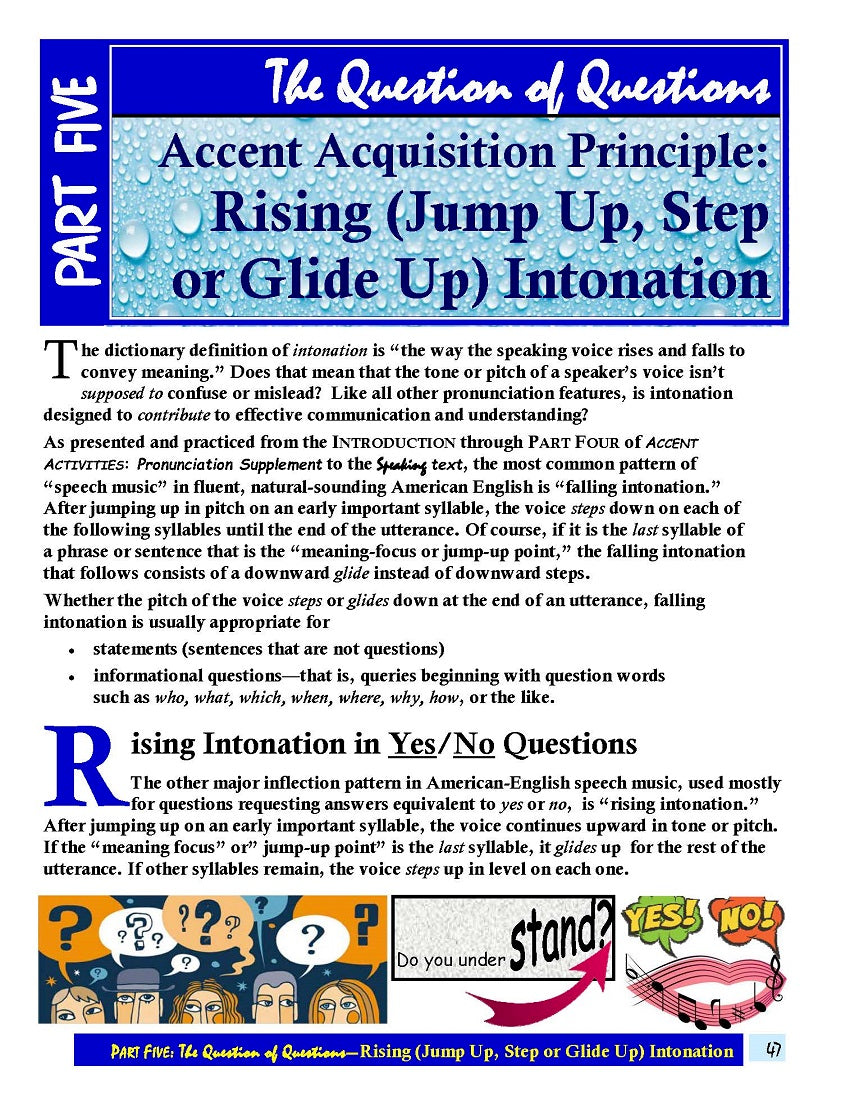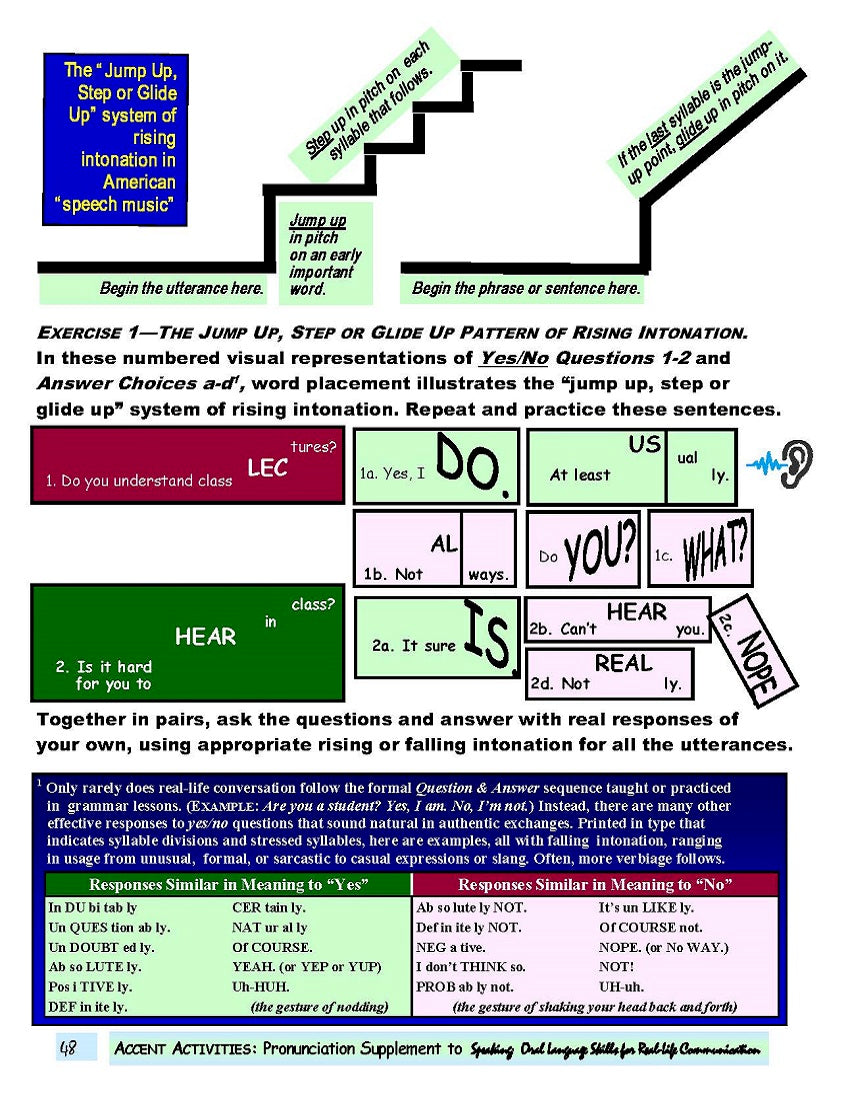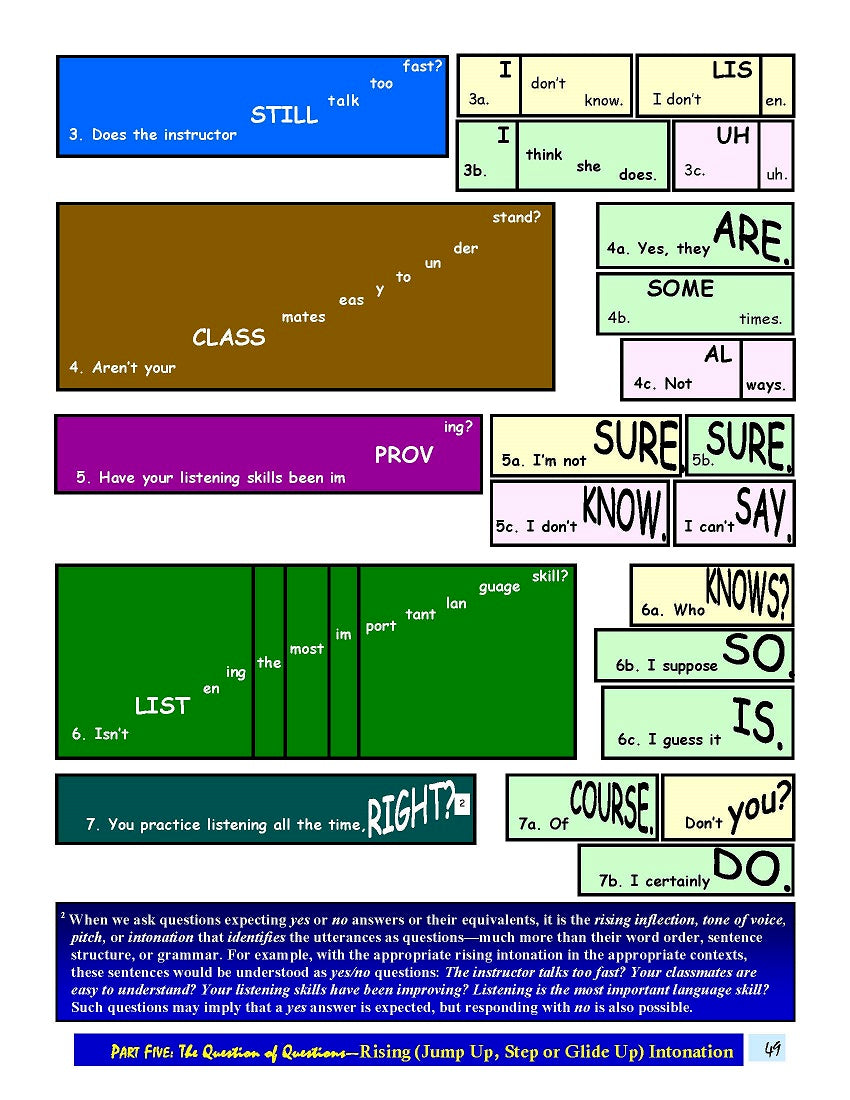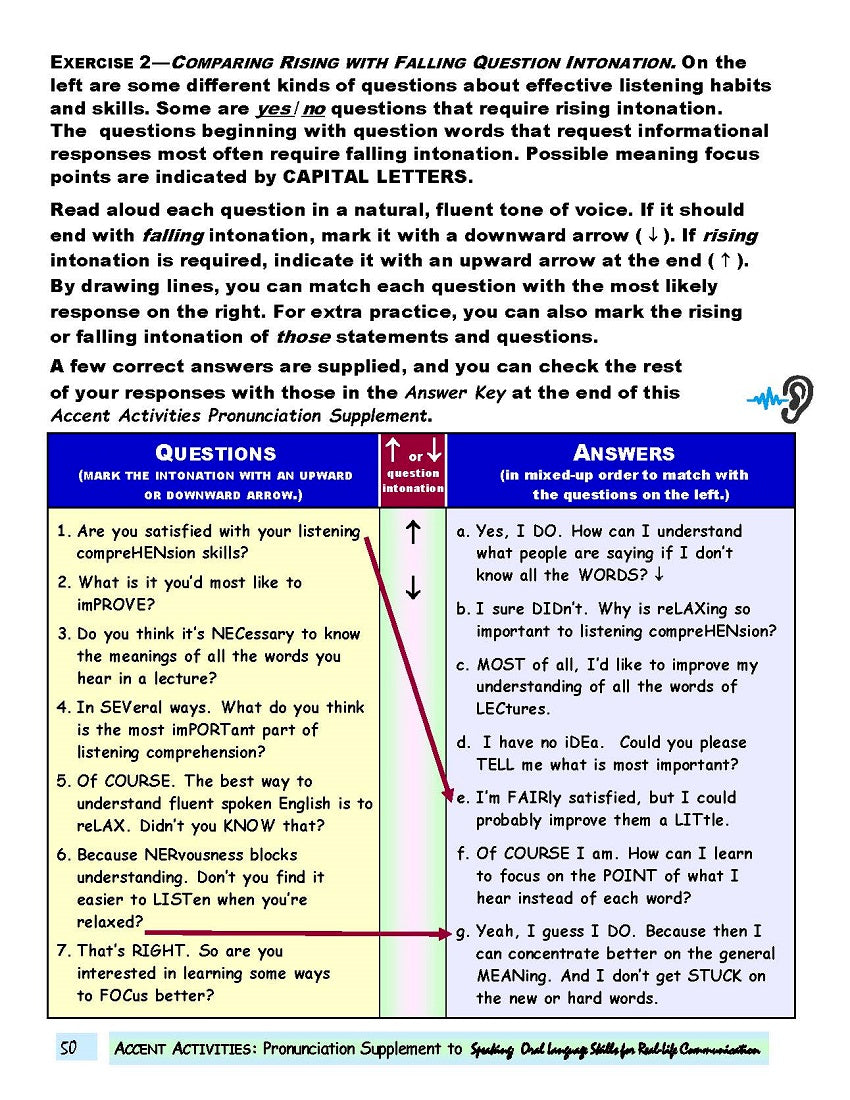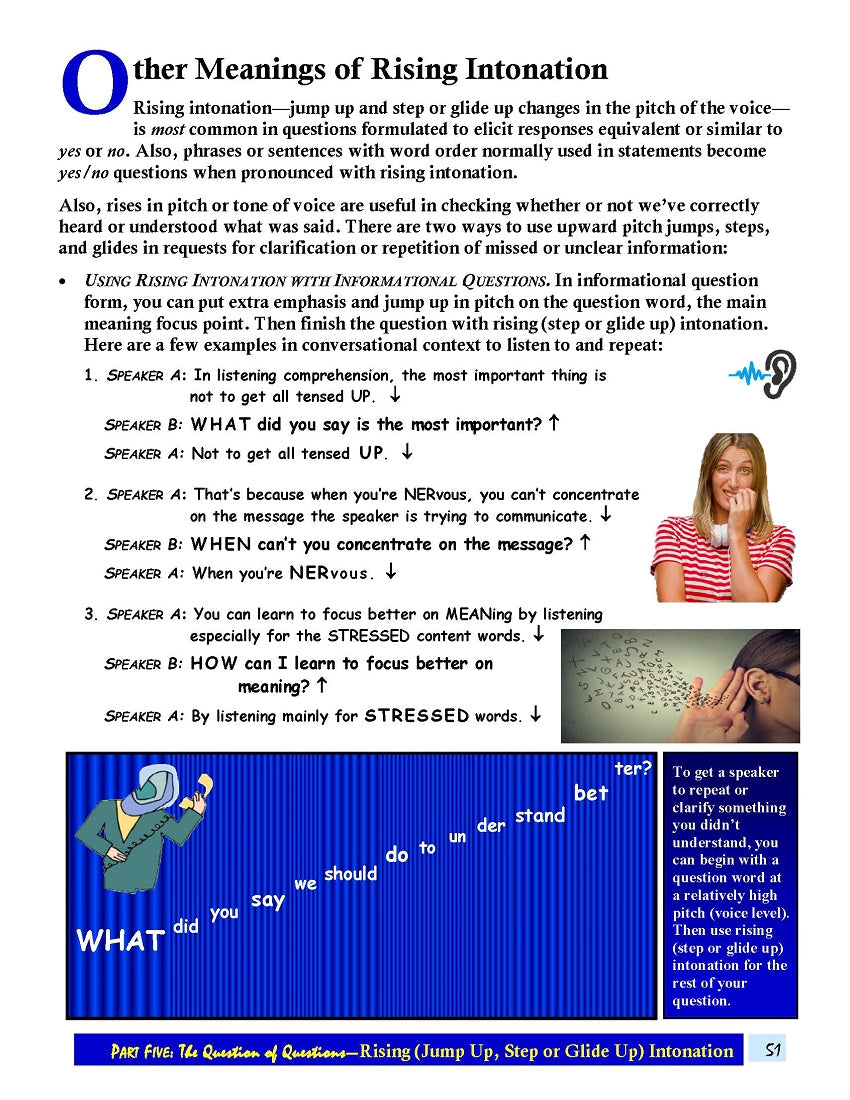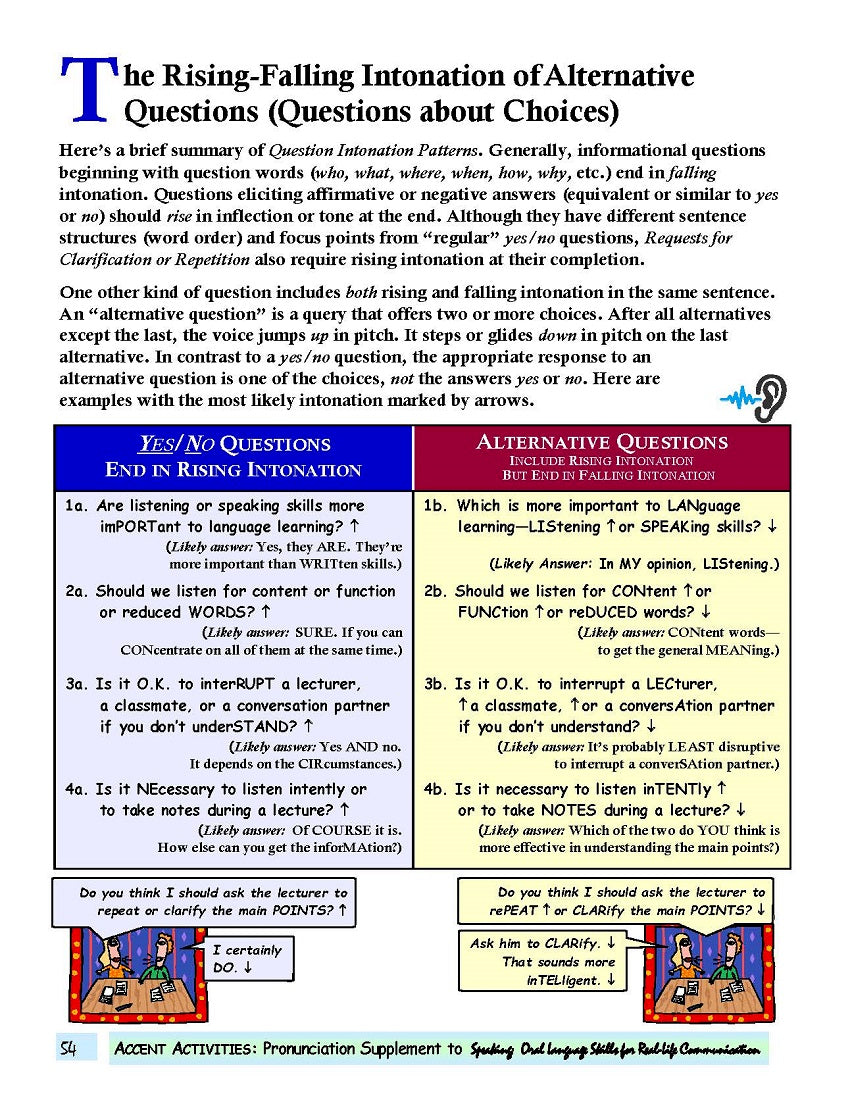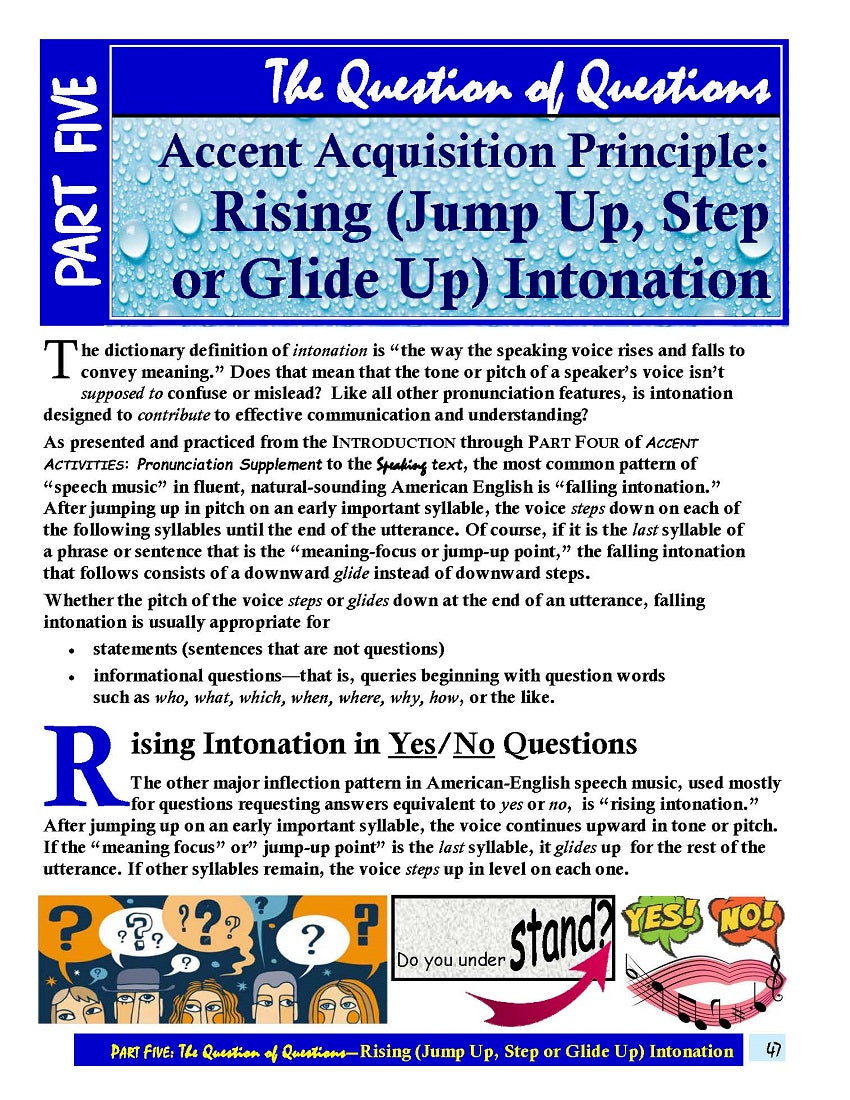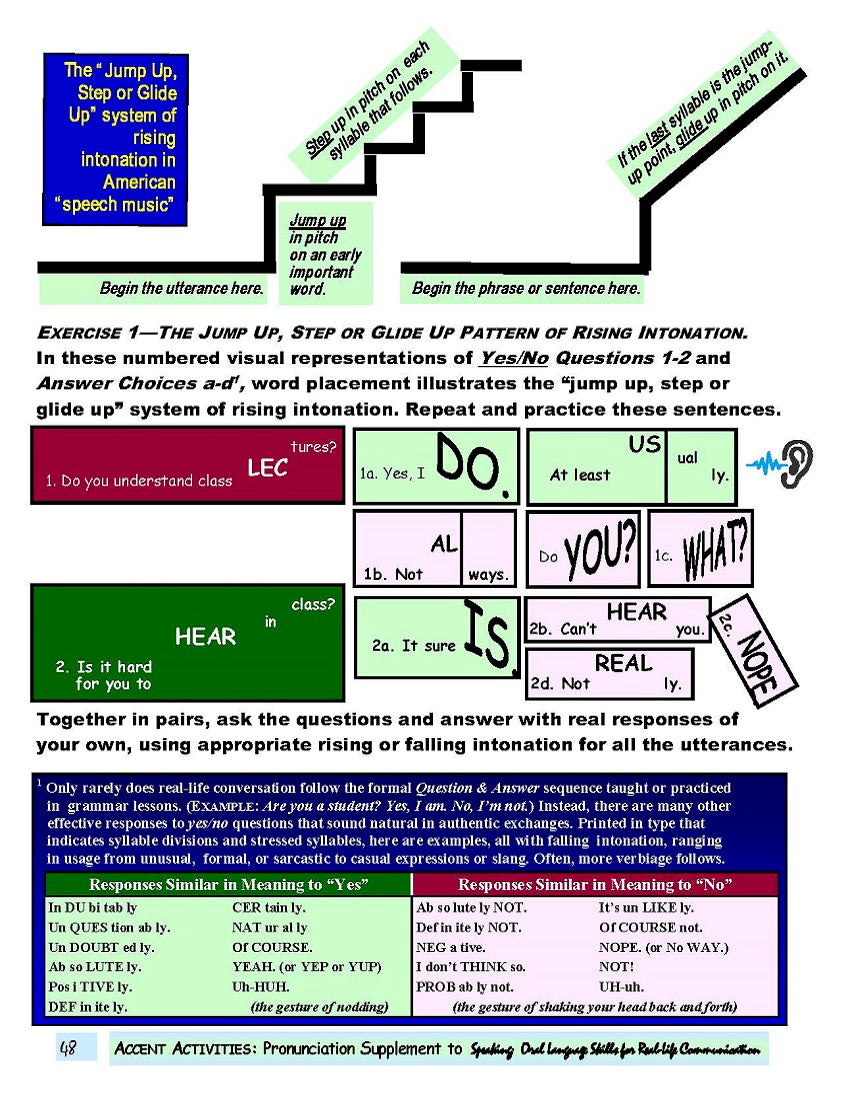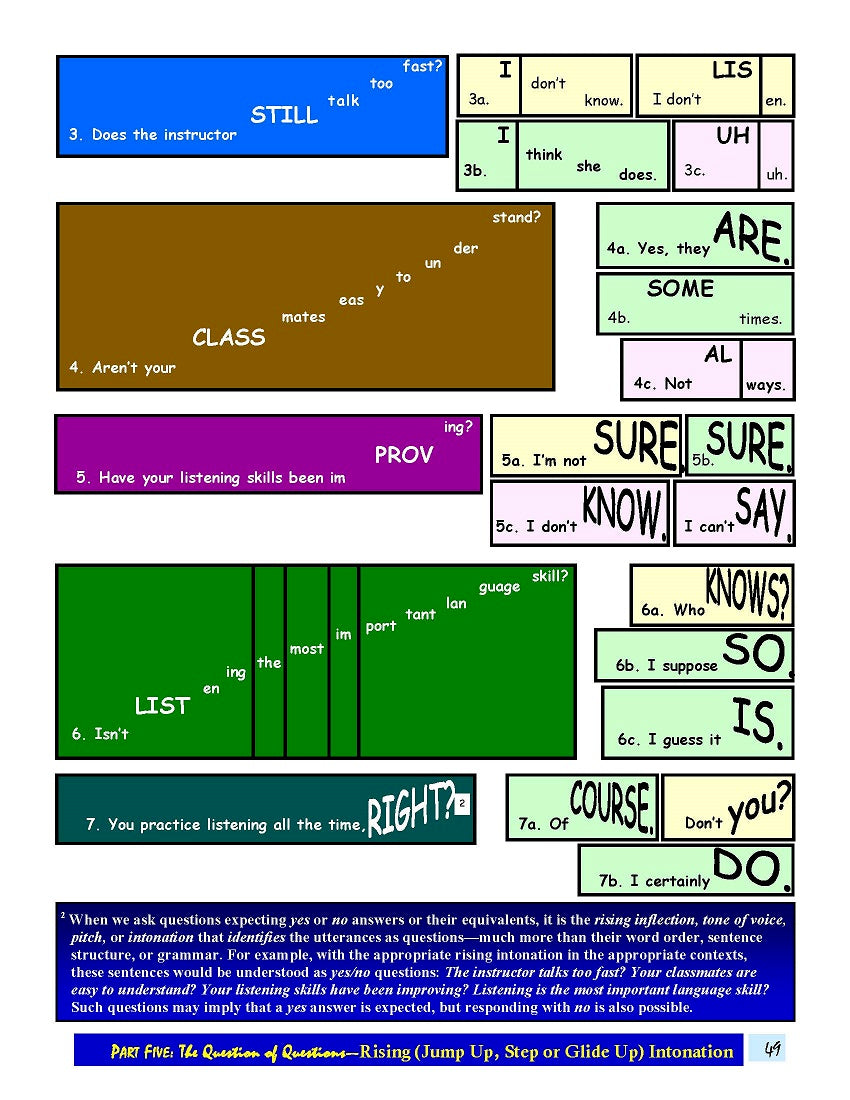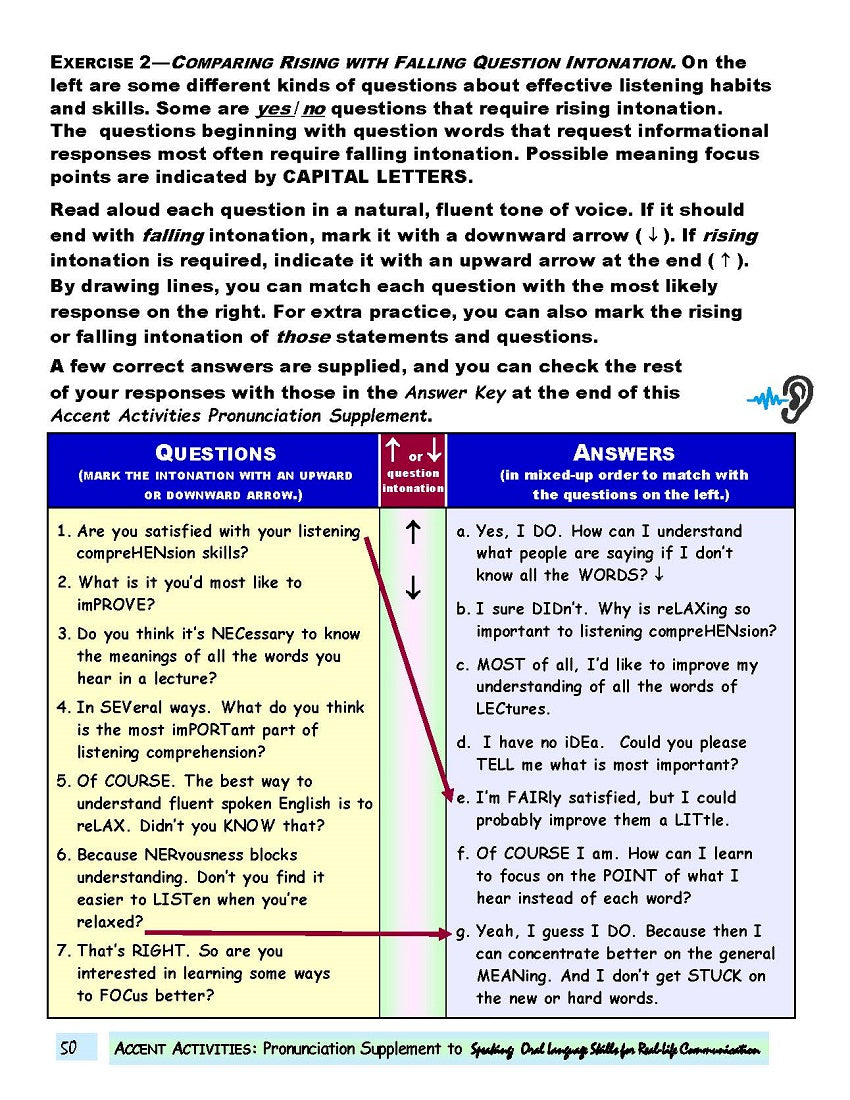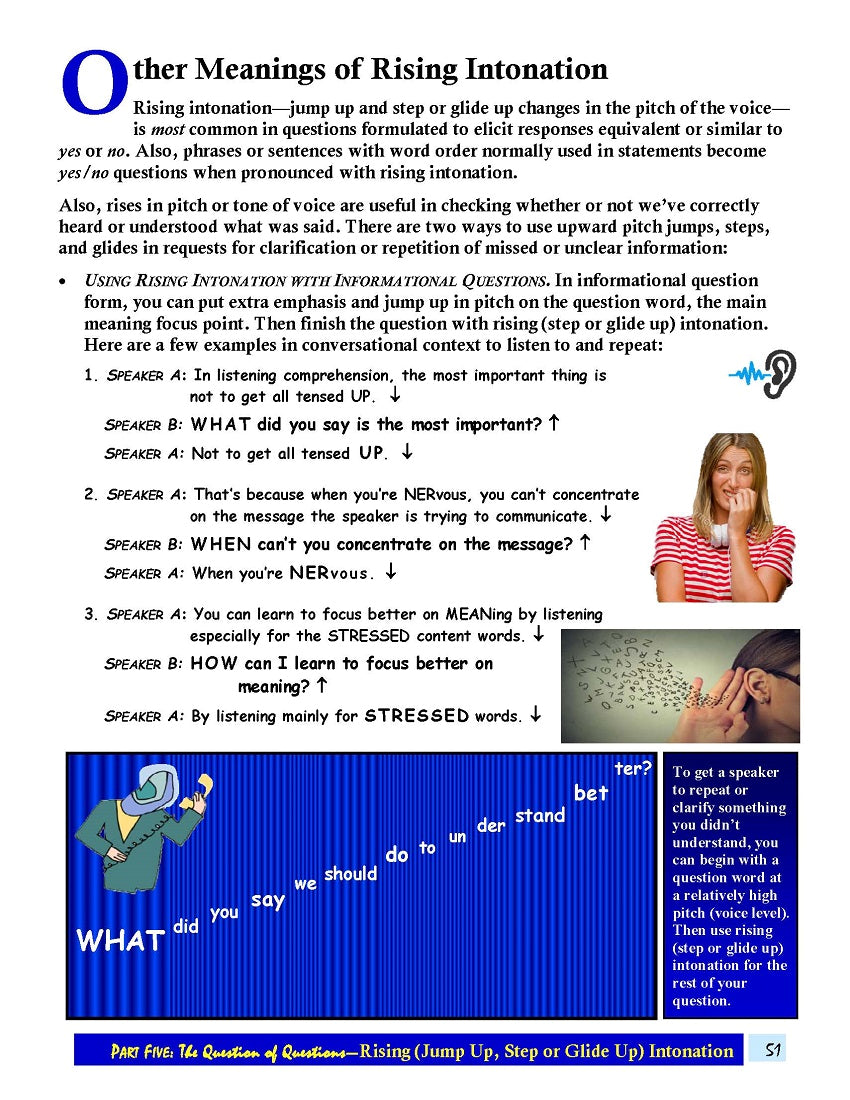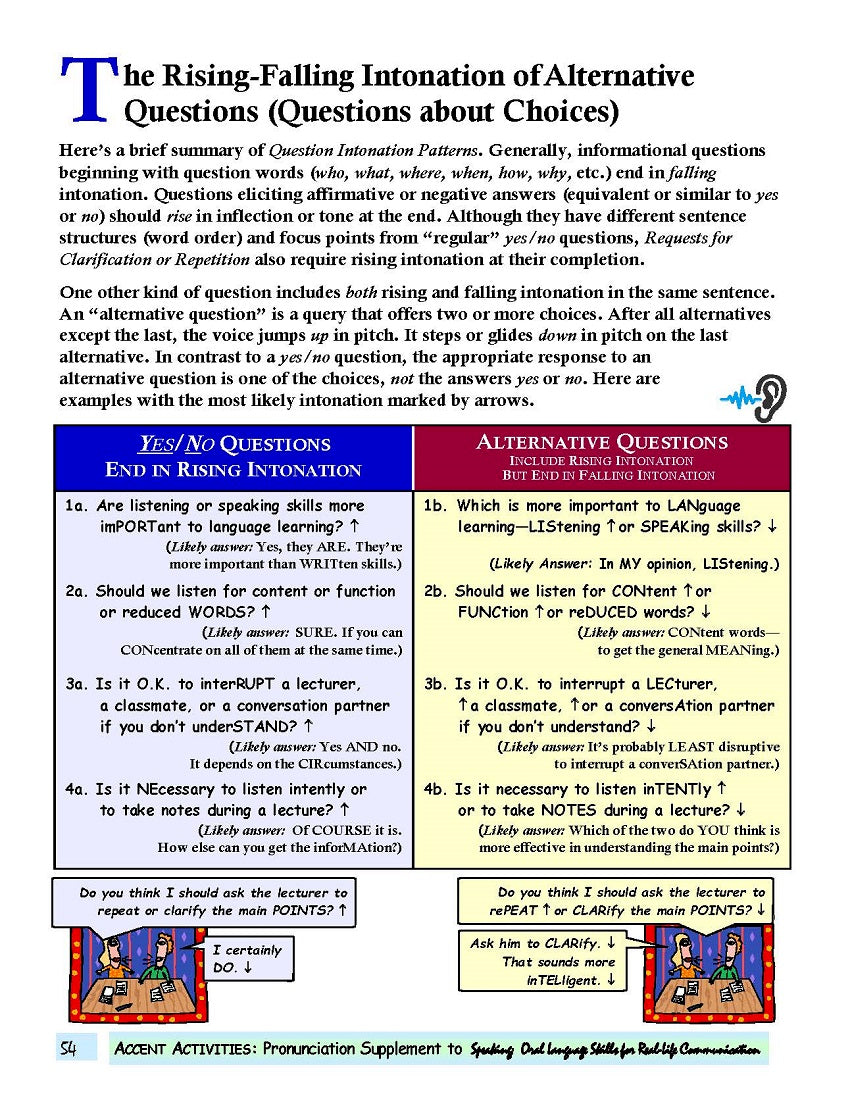Work/Life English
E-10.06 Get the Accent-Acquisition Principle of Rising Intonation (in Questions & Series)
E-10.06 Get the Accent-Acquisition Principle of Rising Intonation (in Questions & Series)
Part Five: The Question of Questions from Accent Activities: Pronunciation Supplement to Speaking: Oral Language Skills for Real-Life Communication, pages 47-56. Accent Acquisition Principle = Rising (Jump Up, Step or Glide Up) Intonation
10 Pages
Who It’s For: Intermediate & Beyond American-English Teachers, Helpers, & Learners Looking to Acquire a Clear Native-Sounding Accent with All Sentence Types
Why It’s Useful: Intonation (“the way the speaking voice rises and falls”) is supposed to convey meaning. Most utterances—particularly statements or informational questions, end in falling (step or glide down) intonation. There are a few kinds of sentences or phrases, however, that require a rise in voice pitch. Contrasting them with more “conventional” means of expression, this Download presents and practices Yes / No Questions, Requests for Clarification, Questions About Choices, and more.
What You’ll Do:
[1] Read and think about “tone of voice” in natural-sounding American English. Understand “the other major inflection pattern in American-English speech music,” used mostly for questions requesting answers equivalent to yes or no.” It’s called “rising intonation” and is used to elicit short answers, check if you heard correctly, and offer choices.
[2] In Exercise 1, practice the “Jump Up, Step or Glide Up Pattern of Rising Intonation. Choose from given vocabulary options—ways to answer or imply (equivalents of) “yes” or “no” (even without using those words). Add your own word usage. In Exercise 2, compare Rising with Falling Question Intonation.
[3] Learn “Other Meanings of Rising Intonation.” To practice “Using Rising Intonation with Informational Questions” or “Checking Unclear Info,” hear Audio, read, and repeat, making clear the purposes of the text Examples. In Exercise 3, listen to a “Tips for Effective Listening.” To check comprehension, use rising patterns skillfully.
With offered pedagogy and the items in Exercise 4, master “Rising-Falling Intonation in Alternative Questions.” Then sum up what you’ve achieved in Exercise 5—”Using Appropriate Intonation for Various Kinds of Questions.”
Couldn't load pickup availability
